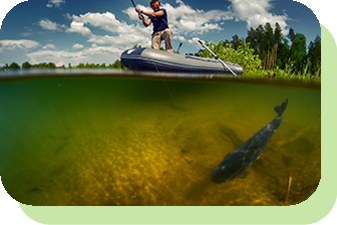Pollution

Open-water net pens, the most common form of salmon farming, are often massive suspended nets surrounding hundreds or thousands of fish, much like the fences around a cattle farm. The nets allow water to freely flow into and out of the pens. There is also no “floor” to the pens – only the natural sea bed.
This means there is no barrier preventing anything – from uneaten fishmeal to residues of pesticides to fecal matter from the fish themselves – from soiling the surrounding environment.
Scientists and farmers asked about this issue acknowledged it is a potential problem that has been poorly managed in the past, but current common practices and regulations from the respective governments where the farmers operate have changed, leading to cleaner farms.
Ian Roberts, a spokesman for Marine Harvest Canada, based in British Columbia, said there was a time when salmon waste and uneaten feed could build up on the ocean floor, but that was 20 to 25 years ago. At that time no one did any kind of monitoring.
“Those days are done,” he said. Today, salmon farmers commonly use underwater cameras to watch the ocean floor. Companies like his also take samples periodically from the floor near their farms to make sure there is a minimal impact. Farmers aren’t just being environmentally-friendly here – eliminating wasted feed saves money, too.
Michael Eppling, an Aquaculture Specialist at the New England Aquarium in Boston, Mass., USA, said even farms that did deposit waste would have a minimal impact. Waste settles, he said, and is unlikely to drift very far.
“The impacts tend to be directly under and in the immediate vicinity of the farms,” he said.
But the producers, Eppling said, should take responsibility for the pens’ impact on the environment. One common preventive measure used today, and even mandated by law in several countries, is fallowing. Like fields on land-based farms, he said, it’s a good idea to leave pens empty for a period after a single crop, or “generation” of salmon is grown and harvested. Producers such as Cooke Aquaculture in eastern Canada have for years been rotating the pens in their licensed sites for the final grow-out stages in an effort to reduce the impact on the bays and inlets in which they operate.
“That’s become an increasingly common practice,” Eppling said.
Roberts said his company also does that to give the pens, and the immediate area around them, a chance to “rest.” This makes for a less adverse effect on the environment, Roberts said, and it makes for a better environment to farm in.
“We want the area where we farm to be healthy because it’s where we farm,” he said.





